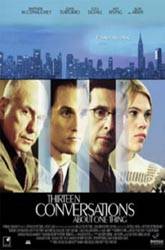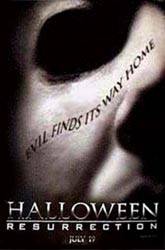 Director: Starring:
OTHER REVIEWS: Ghost
World Life as
a House The
Virgin Suicides Y Tu Mamá
También |
The Dangerous Lives of Altar
Boys
BY: DAVID PERRY With a title that feels oddly prescient today considering the film was made a year ago, The Dangerous Lives of Altar Boys has no contemporary meaning. If it had, of course, CNN would have already ran the film's early perception of a upcoming scandal into the ground. Instead of keeping with contemporary concerns in the Catholic Church, the film is more interested in the 1970s milieu of all kids. Coming from a novel by Chris Fuhrmann, Altar Boys plays much like an excised suburban vignette from the miserable miniseries The 70s, trying aimlessly to piece together a realization of the fears that go through all adolescents especially in a time when adults are having the same fears. But, ultimately, The Dangerous Lives of Altar Boys cannot meet the same achievements of The Ice Storm, which not only shares the theme but also the interest in comic books. For Peter Care's film, though, the comic books serve as more than a small detail to go with Tobey Maguire's ride on a New York-Connecticut train -- Altar Boys has less to say and, therefore, must rely on the comic books to fill the duration of the feature lest it be a short (and still unfulfilling) short film. The mistake was not in the choice of Todd McFarlane to animate the comic book sections of the film (McFarlane, especially in his intense "Do the Evolution" video, is one of the most talented modern graphic artists); the mistake was that Care did not get screenwriter Jeff Stockwell to strengthen the live-action scenes without having to use a stale series of Heavy Metal inspired animations. The kids at the center of this tale are Tim Sullivan (Culkin), a whirling dervish of a problem child, and Francis Doyle (Hirsch), his more thoughtful but equally mischievous best friend. Attending a Catholic high school in an unnamed small suburban town (probably in the south -- the film was made in the Carolinas and the original story comes from Georgia), where they attempt to decry everything their religious leaders praise, ranging from their schoolmarm disciplinarian Sister Assumpta (Foster) to their chain-smoking head priest Father Casey (D'Onofrio) to the statue of St. Agatha that adorns the clock tower of the school. Usually, their indignation simply comes with grabbing their crotches towards St. Agatha's statue and drawing comics of Sister Assumpta and Father Casey in S & M situations. While Tim draws up plans to torture Sister Assumpta, including one plan that involves the theft of a cougar, Francis works on a series of comic book stories that parallel their ongoing battle with Sister Assumpta, given the villainess name of Nunzilla. Soon, their bonds slowly deteriorate as Francis finds love in the form of Margie Flynn (Malone), a slightly dark young lady with a family secret. The Dangerous Lives of Altar Boys strains to find some form of an emotional reception within its occasionally lifeless story. Unfortunately, Peter Care cannot find the right footing to allow anything as heavy as, say, Margie's deep secret to come without completely throwing off the core of the movie. This is not a movie that really understands tonal foreshadowing, making some histrionics feel forced in the same way Sophia Coppola ensured that The Virgin Suicides never felt like it was taking an ill-chosen detour with its more intimate look at awakening and obsession within the setting. Both of the young leads do a good job, giving dimensions to their roles that go well with their characters' youths. Meanwhile, Stockwell tries desperately to infuse some intelligent recourse into their actions by constantly repeating lines from William Blake's "The Tyger." Choosing to use Blake would not have seemed as out of place had the filmmakers known how to use the poem without making it seem like they were reading something that could be equated to nearly anything (the way Stockwell and Fuhrman attempt to find a parallel between one character and Blake's tyger is like doing the same with Owen Wilson in The Minus Man to The Grapes of Wrath's Jim Casy because they are both simply ponderous vagabonds). This is not to say that The Dangerous Lives of Altar
Boys is a complete waste both visually and artistically. This is a film that at least
attempts some lofty goals and, like its characters, has the poor luck to pay heavily for
not understanding the consequences of trying something elevated and falling. |








